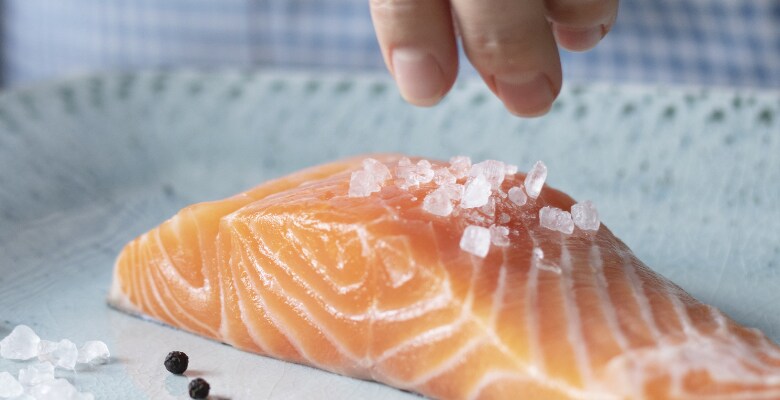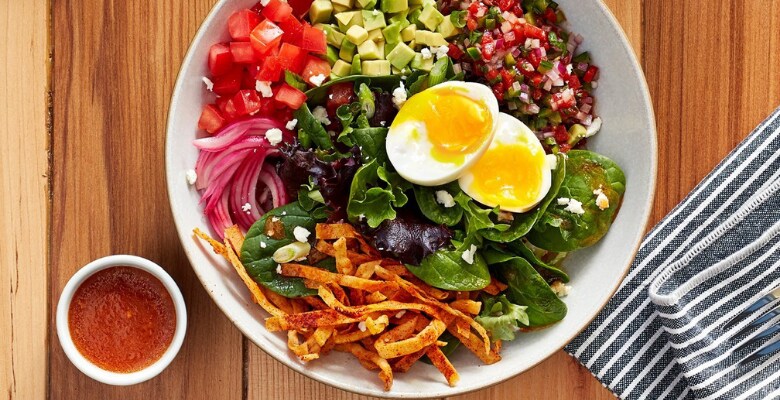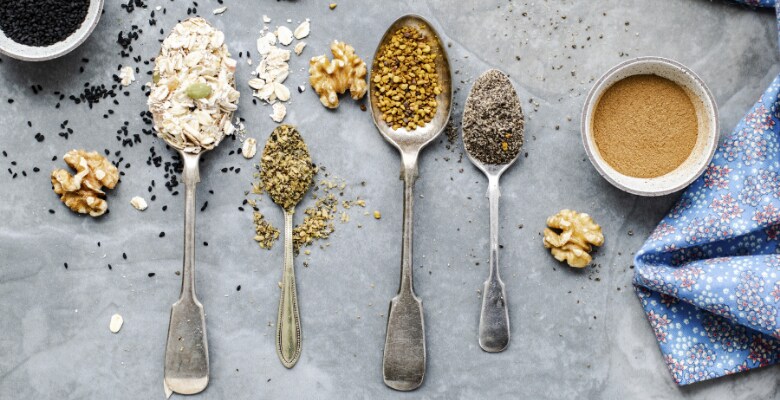If you’re experimenting with old recipes or trying to spice up a new recipe, try these pro seasoning techniques tested and proven by other chefs.
- Up the Acidity: Up the Acidity: use citric acid, vinegar, or fresh citrus juice to create balance in a dish.
- Use a Spice-Filled Sachet: The sachet is an innovative way to allow herbs and spices to seep into any liquid.
- Play with Salt: Change up the amount or flavour of the salt.
- Utilize Umami: You can achieve this coveted savoury taste with parmesan, fish flakes, or dried seaweed.
- Sprinkle in Sugar: Use different sugar varieties to add a new dimension to a normally salty or savoury dish.
- Time your Seasoning: When you’re adding dry or fresh herbs can change everything!
- Use Up Every Scrap: Not only can you save money and reduce waste by using every scrap of food, but those little additions can make your food taste a new level of amazing.
Below we’ll go over the basics of how to use spices and implement each seasoning technique, as well as some creative options that some great chefs are using.

1. Up the Acidity
Citrus and other acids can transform any recipe. It brightens dull flavours and refreshes the palate. If you feel like a dish is missing something, give acid a try.¹
You can use acid during the cooking process, or even better, just finish off the dish by dribbling, zesting or squeezing some acid on top. Here are some acids that will take any dish to the next level:
- Lemons
- Limes
- Lemons
- Limes
- Vinegars
- Wine
- Pickling liquids
- Sumac powder
- Tart berries
- Tamarind
- Green mangoes
- Tomatoes
- Beer
- Cultured dairy
Try squeezing lemon onto grilled chicken or adding vinegar to your next soup of the day. If your roasted vegetables taste a bit bland, kick them up with a little citric acid.
There are plenty of ways to get creative. Claudio Aprile, of Toronto’s Origin restaurants, recommends using Asian citrus (think yuzu or calamansi limes) with fatty foods like raw fish.²
The acid trick can be applied to desserts, sauces, and meats – anything, really. Sample different acid-food pairings to discover which are the tastiest, and which might not be as pleasant.
These fried cauliflower tacos not only cater to the plant-based food craze, but also use mangoes and vinegar to acidify the recipe and produce a killer taste.
2. Use a Spice-Filled Sachet
The sachet is a bundle made by filling a piece of cheesecloth with herbs and seasonings, and tied together with kitchen twine.
You don’t even have to pull your herbs off their stems to put them into a cheesecloth sachet. Place the herbs and spices in the bundle and throw it into any liquid-based or boiled recipe. Everyone loves the bold infusion of flavour a sachet can bring to the table.
Try your spice-filled sachet in:
- Stews
- Soups
- Ragus
- Braised meats
- Apple cider
- Rice
- Marmalade
From bay leaf to pink peppercorns, the options are endless with the spice-filled sachet!
If you want to see a first-hand example of how sachets can bump up any flavour, check out this mushroom ragout with creamy polenta recipe.

3. Play with Salt
Of course, chefs know all about using salt to enhance every flavour. But maybe a fresh salt flavour could transform that dish that needs a little something

Here are a few ways to play with salt that might give you an idea:
- Use a high-quality coarse salt to finish your dishes
- Use kosher and sea salt over table salt (table salt falls through the fingers too easily to guarantee accurate seasoning)
- Salt more aggressively, tasting regularly
- Boil in briny water (hot tip: add a couple hunks of potatoes to correct overly salty broth. The potatoes will draw out some salt)³
You might also consider how you season with salt. Keep it in a bowl – even better, a salt pig (which is a covered bowl with a small opening for the fingers). Let the salt fall at least one foot above your food for a more even coating.
Ravi Kanagarajah, affectionately known in Toronto as “the Prince of Soup” and having passed away in 2013, urged chefs to use salt throughout the entire cooking process – not just at the end.
Kanagarajah would add salt at the start of his soup-making procedure, using it on the onions. He would then use it again when adding more vegetables and liquid, and once more at the end. Dashes of salt along the way will embolden every layer of flavour of your dish.
4. Utilize Umami
Drop a Parmesan rind – splash – into your sizzling stew. Get a spoonful, blow to cool, and enjoy the blast of savoury flavour.
Umami is a flavour unique from salty, sweet, sour or bitter, and it keeps customers craving our food!
Here are some of the best ingredients you can use to create umami:
- Bacon
- Parmesan
- Roasted tomato slices
- Shiitake mushrooms
- White soy aioli
- Fish flakes
- Dried seaweed
- Miso
- Tomato paste
- Knorr Professional Intense Flavours Miso Umami
Chef Chris Koetke has recommends doing some comparative testing to better understand and use umami. He says that chefs should make a soup and divide it in two, adding some MSG (which is umami-rich) to one of the soups and then tasting them side-by-side. The chef can try this practice with a few dishes to get a better feel for pulling that elusive umami flavour out of their recipes.⁴
5. Sprinkle in Sugar
Using sugary substances is another way to balance your dishes if they’re lacking that extra umph. Try adding sugar to a meat sauce or tomato soup. It’s always nice to add a little sweetness to vinegar-based salad dressings as well.
Sprinkle in different sugar varieties like:
- Honey
- Agave syrup
- Turbinado
- Coconut sugar
- Stevia
- Molasses
- White sugar
- Brown sugar
Of course, sugar is the perfect contrast to salt. In an oversalted dish, add a little sugar to taste. Sugar can also counter too much acidity.
Try this Huevos Rancheros Salad Bowl for a little turbinado inspiration!

6. Time your Seasoning
Let’s talk a little more about seasoning dishes as you go. Here are some tips on how you should time your seasoning to transform any recipe:
- When sautéing, add salt to the meats and raw vegetables to draw out their moisture and deepen the flavour. This technique can actually reduce sodium content while still producing a punchy flavour.
- Spend a little extra time to taste and season each ingredient throughout the process. Ensure perfect seasoning in each step before moving onto the next.
- Add dried herbs and spices, especially woodsy ones like rosemary and thyme, towards the beginning of meal prep. Early seasoning ensures full flavour development.
- Add fresh tender herbs at the end of the cooking process, like parsley and chives. Using those fresh herbs at the end of the process will add that flavourful pop to your creation.⁵

7. Use Up Every Scrap
Herb stems and fruit scraps can be true treasures when it comes to seasoning. The chart below will give you some creative ways to season while also saving money.
-
Ingredient
How to Use it to Season & Save
Veggie scraps
Every time you chop vegetables, save the scraps. Ends of onions, tomato cores, corn cobs, and little leftovers can be used to create flavourful vegetable broth and soups.
Leek tops
Leek tops often go to waste, but they add a rich, umami seasoning to soups, salads, rice dishes and stews.
Pickle brine
Save all of that brine from pickled foods. It’s a delicious addition to flavour soup or brine meat or poultry. You can use pickle brine to liven up any bland food.
Fruit scraps
To create mind-blowing vinegars for salads, sauces and desserts, fill a jar with fruit scraps. Add a spoonful of sugar and pour water to cover the scrabs. Cover the jar and stir daily. Strain and use it anytime.
Citrus peels
Citrus peels are worth gold. Use them to zest anything, or put them in marmalade, teas, or candy them.
Parmesan rinds
As mentioned earlier, parmesan rinds can be used to elevate the flavour of any soup or sauce, and they don’t go bad for months and months.⁶
Herb stems
Don’t throw them out! Add those herb stems to broths, stews and soups for more flavour.

Creative Seasoning for Kitchen Success
Creativity is a chef’s lifeblood. Resourcefulness is the key to incredible cooking and success.
Ever-bettering recipes and kitchens can be exhausting, so hopefully learning or reviewing a few of these ideas can break through the fatigue and inspire you.
Here is a final list of creative herbs and spices that may help you brew up some new ideas for creative seasoning techniques:
- Mace
- Mustard seeds (brown or black)
- Sumac
- Turmeric
- Caraway
- Lemon juice powder
- Fennel seeds
- Asafoetida powder
- Panch Phoran
- Kaffir lime leaves
- Grains of Paradise
- Sumac spice
- Pasilla
- Rubbed sage
There are new herbs and spices from all over the word that can revolutionize a menu. A little experimentation will show you how to transform a recipe that you feel needs a change.


